What you want to do is somewhat complex, so might be challenging even if you weren't just learning how to use tkinter (only exacerbated by the fact it's so poorly documented). So I've create an example of how to do it based on the code in your question.
One non-intuitive thing (to me) is that the Event handling "callback" function for the <'Configure>' event of a window gets called for the window itself and for all the widgets inside it — which can be very confusing if you don't realize that's what happens.
I've also changed and reformatted your code to more closely follow the PEP 8 - Style Guide for Python Code suggestions, which I strongly suggest your read and start following. Note in particular I changed your wildcard from tkinter import * into the preferrable import tkinter as tk — see Should wildcard import be avoided?
import tkinter as tk
WIDTH, HEIGHT = 1366, 768 # Initial size of root window.
class InventorySystem:
# Gradient frame colors.
COLORS = ["#007F5F", "#2B9348", "#55A630", "#80B918", "#AACC00",
"#BFD200", "#D4D700", "#DDDF00", "#EEEF20", "#FFFF3F"]
def __init__(self, root):
self.root = root
self.root.title("Inventory System")
self.root.geometry(f'{WIDTH}x{HEIGHT}')
self.width, self.height = WIDTH, HEIGHT # Size of root window.
self.create_gradient_frames()
def create_gradient_frames(self):
"""Create a gradient frame for each color."""
self.gradient_frames = []
colors = self.COLORS # Alias for local access.
gradient_frame_width = round(self.width / len(colors))
gradient_frame_height = self.height
for i, color in enumerate(colors):
frame = tk.Frame(self.root, width=gradient_frame_width,
height=gradient_frame_height, bg=color)
frame.place(x=i * gradient_frame_width,
y=self.height - gradient_frame_height)
self.gradient_frames.append(frame)
def update_gradient_frames(self):
"""Update size and position of all gradient frames."""
gradient_frame_width = round(self.width / len(self.COLORS))
gradient_frame_height = self.height
for i, frame in enumerate(self.gradient_frames):
frame.config(width=gradient_frame_width, height=gradient_frame_height)
frame.place(x=i * gradient_frame_width,
y=self.height - gradient_frame_height)
def on_resize(self, event):
"""Root window size change event handler."""
# Needed following because event handler is called for the container win
# and all its child widgets but we only need to handle container itself.
if event.widget.master is not None: # Not the root window?
return # Ignore.
width, height = root.winfo_width(), root.winfo_height() # Current size.
if width != self.width or height != self.height: # Updated?
self.width, self.height = width, height # Track change.
self.update_gradient_frames()
if __name__ == "__main__":
root = tk.Tk()
application = InventorySystem(root)
root.bind('<Configure>', application.on_resize) # Bind callback function to event.
root.mainloop()
Here's a screenshot of the window being resized:

